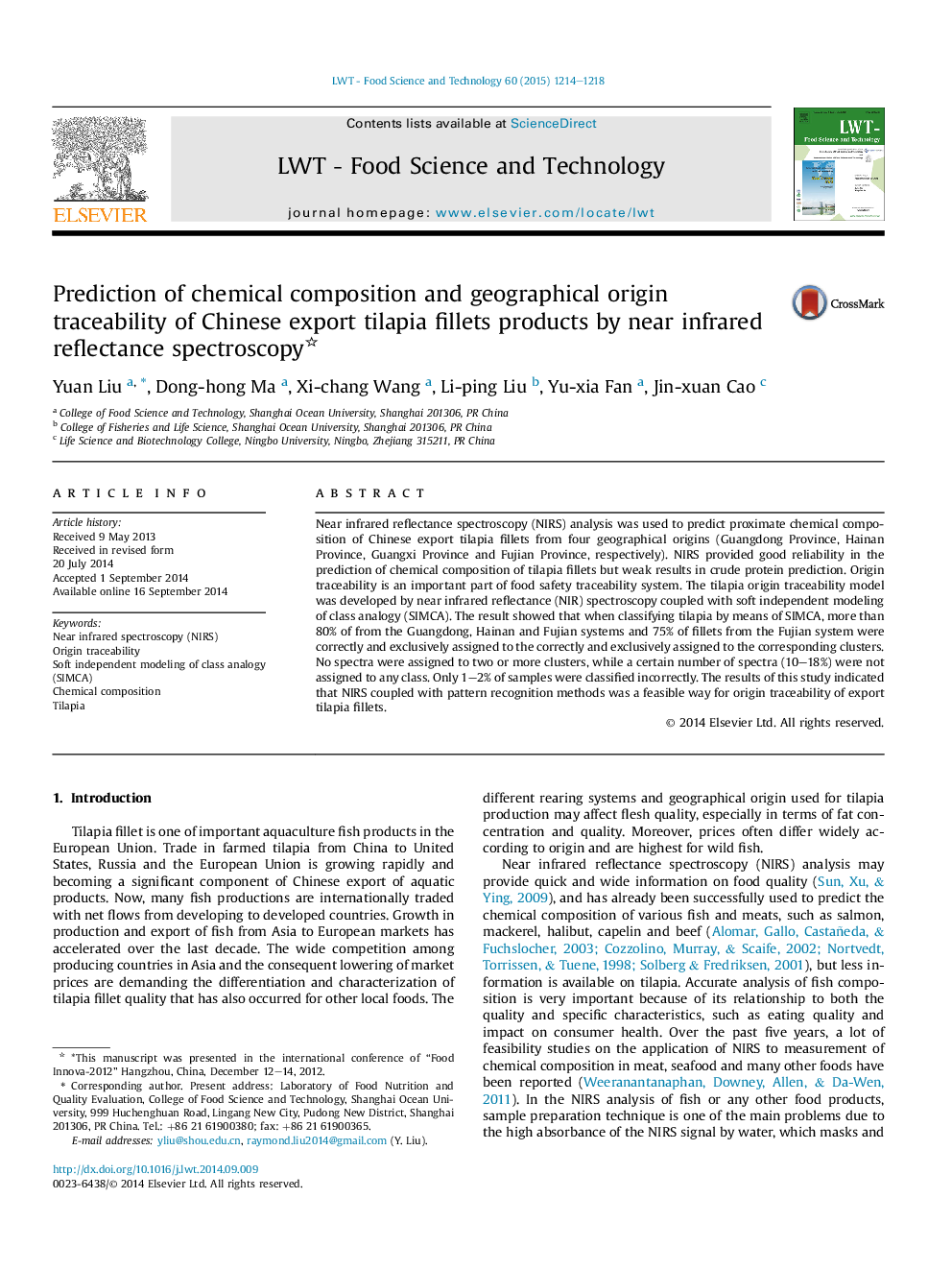| Article ID | Journal | Published Year | Pages | File Type |
|---|---|---|---|---|
| 4563859 | LWT - Food Science and Technology | 2015 | 5 Pages |
•NIRS analysis was used to predict chemical composition of tilapia fillets.•Classifying tilapia by means of SIMCA was correctly and exclusively.•A certain number (10–18%) was not assigned to any class.•Results indicated that NIRS was a way for origin traceability of tilapia fillets.
Near infrared reflectance spectroscopy (NIRS) analysis was used to predict proximate chemical composition of Chinese export tilapia fillets from four geographical origins (Guangdong Province, Hainan Province, Guangxi Province and Fujian Province, respectively). NIRS provided good reliability in the prediction of chemical composition of tilapia fillets but weak results in crude protein prediction. Origin traceability is an important part of food safety traceability system. The tilapia origin traceability model was developed by near infrared reflectance (NIR) spectroscopy coupled with soft independent modeling of class analogy (SIMCA). The result showed that when classifying tilapia by means of SIMCA, more than 80% of from the Guangdong, Hainan and Fujian systems and 75% of fillets from the Fujian system were correctly and exclusively assigned to the correctly and exclusively assigned to the corresponding clusters. No spectra were assigned to two or more clusters, while a certain number of spectra (10–18%) were not assigned to any class. Only 1–2% of samples were classified incorrectly. The results of this study indicated that NIRS coupled with pattern recognition methods was a feasible way for origin traceability of export tilapia fillets.
